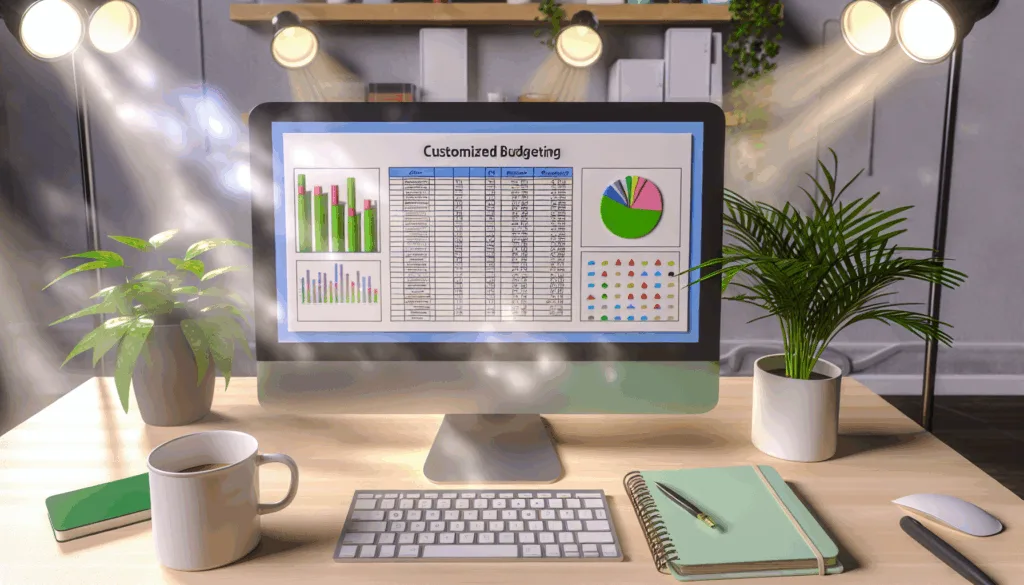How to Set Up a Budgeting Spreadsheet That Actually Works
Budgeting is a crucial aspect of financial management, yet many find it daunting or tedious. The good news is that with the right tools and a bit of guidance, anyone can create a budgeting spreadsheet that not only works but also simplifies financial planning. This article will guide you through setting up a budgeting spreadsheet that is both effective and easy to maintain, ensuring you stay on top of your finances with confidence.
Understanding the Basics of Budgeting
Before diving into the technical aspects of setting up a spreadsheet, it’s essential to understand the fundamentals of budgeting. A budget is essentially a plan that outlines your expected income and expenses over a specific period. It helps you track where your money goes, ensuring you have enough for essentials while also saving for future goals.
To start, identify your financial goals. Whether it’s saving for a vacation, paying off debt, or building an emergency fund, clear objectives will guide your budgeting process. Next, assess your income sources, including salary, bonuses, and any side hustles. This comprehensive view of your income will form the foundation of your budget.
Additionally, categorize your expenses. Common categories include housing, utilities, groceries, transportation, entertainment, and savings. Categorizing helps in identifying areas where you can cut back and allocate funds more efficiently. With these basics in place, you’re ready to create a spreadsheet that caters to your financial needs.
Choosing the Right Tool
Selecting the right tool is crucial for creating a budgeting spreadsheet that suits your lifestyle. While there are many software options available, Microsoft Excel and Google Sheets are popular choices due to their flexibility and accessibility. Both platforms offer templates that can be customized to fit your specific requirements.
Microsoft Excel is a powerful tool with advanced functionalities, making it ideal for those who need detailed analysis and complex calculations. It offers a wide range of features, including pivot tables and data visualization tools. However, it requires a subscription, which might not be suitable for everyone.
On the other hand, Google Sheets is a free, cloud-based alternative that offers collaborative features, allowing multiple users to access and edit the spreadsheet simultaneously. It’s perfect for those who need to share their budget with a partner or family members. The choice between these tools depends on your specific needs and comfort level with technology.

Setting Up Your Spreadsheet
Once you’ve chosen your tool, it’s time to set up your spreadsheet. Start by creating a new document and labeling it clearly, such as "Monthly Budget." This helps in easy identification and organization.
Begin by creating columns for each essential element of your budget: Income, Expenses, and Savings. Under Income, list all your sources, such as salary, freelance work, or rental income. For Expenses, categorize them into fixed (e.g., rent, insurance) and variable (e.g., groceries, entertainment) costs. The Savings column should include your savings goals and contributions.
To enhance clarity, use color coding. For instance, green for income, red for expenses, and blue for savings. This visual distinction makes it easier to identify areas at a glance. Additionally, consider adding a Total column at the end of each section to automatically calculate the sum, providing a quick overview of your financial standing.
Automating Calculations
Automation is a key feature that can transform your budgeting spreadsheet from a static document into a dynamic financial tool. By using formulas, you can automate calculations, reducing manual errors and saving time.
For instance, use the SUM function to total your income and expenses. To calculate your net income, subtract the total expenses from the total income. This gives you a clear picture of your financial health each month. Additionally, you can use conditional formatting to highlight any discrepancies or overspending in your budget.
Creating a simple table can also help visualize your budget:
| Category | Budgeted Amount | Actual Amount | Difference |
|---|---|---|---|
| Income | $4000 | $4200 | +$200 |
| Housing | $1000 | $950 | +$50 |
| Utilities | $200 | $220 | -$20 |
| Groceries | $300 | $280 | +$20 |
| Entertainment | $150 | $180 | -$30 |
| Savings | $500 | $500 | $0 |
This table format allows for easy comparison between budgeted and actual amounts, helping you identify areas for adjustment.
Customizing for Personal Needs
Every individual or family has unique financial circumstances, so it’s crucial to customize your budgeting spreadsheet to reflect your personal needs. Start by adding or removing categories based on your specific expenses. For example, if you have children, you might include categories for education or childcare.
Consider incorporating a section for irregular expenses, such as annual subscriptions or car maintenance. These can be averaged monthly to prevent any surprises. Additionally, if you have debts, create a separate section to track payments and outstanding balances, helping you stay focused on debt reduction goals.
Another customization could be the inclusion of graphs or charts. Visual representations of your income and expenses can provide insights into spending patterns and highlight areas for improvement. Most spreadsheet tools offer built-in chart functionalities that are easy to use and customize.

Regularly Reviewing and Adjusting
Creating a budgeting spreadsheet is not a one-time task. To ensure it remains effective, regular reviews and adjustments are necessary. Set aside time each month to update your spreadsheet with actual income and expenses. This practice keeps your budget accurate and relevant.
During these reviews, compare your budgeted amounts with actual figures. Identify any discrepancies and analyze the reasons behind them. This could involve adjusting spending habits or re-evaluating your financial goals. Regular adjustments ensure your budget remains aligned with your financial situation and objectives.
Moreover, consider setting reminders for these reviews. Whether it’s a calendar alert or a recurring task, reminders help maintain consistency in your budgeting efforts. Over time, this practice will become second nature, significantly enhancing your financial management skills.
Benefits of a Well-Managed Budget
A well-managed budgeting spreadsheet offers numerous benefits beyond mere financial tracking. It provides peace of mind, knowing that you’re in control of your finances and prepared for unexpected expenses. This sense of security can reduce stress and improve overall well-being.
Additionally, a clear budget helps in making informed financial decisions. Whether it’s deciding on a major purchase or planning a vacation, having a detailed understanding of your financial situation enables better decision-making. It also fosters discipline and accountability, encouraging responsible spending and saving habits.
Finally, a budgeting spreadsheet can be a valuable tool for achieving long-term financial goals. By consistently tracking and adjusting your finances, you can build savings, reduce debt, and ultimately achieve financial independence. The discipline and insights gained from budgeting are invaluable in creating a secure financial future.
Conclusion
Setting up a budgeting spreadsheet that actually works involves understanding the basics of budgeting, choosing the right tools, and customizing the spreadsheet to fit your unique needs. By automating calculations and regularly reviewing your budget, you can maintain financial control and make informed decisions. A well-managed budget not only provides peace of mind but also paves the way for achieving long-term financial goals. Start today, and take the first step towards a more secure financial future.

